
Rome is truly a historical city. From being a small town in central Italy’s Tiber River, Ancient Rome grew into an empire that borders most of continental Europe, much of western Asia, Britain, the Mediterranean islands, and northern Africa. Out of all the Rome facts in the world, we’re sure this is one that will surprise you – did you know that a lot of things we use today originated in Rome?
Ancient Rome made major contributions in the areas of medicine, government, and architecture, among others. More specifically, the use of calendars, the modern Western alphabet, even the existence of the Roman Catholic Church. Undoubtedly, the Romans were terrific trend-setters in the ancient world. What they didn’t originate, they copied and modified from others, spreading new ideas to different countries and civilizations.
At present, the influence Rome has on the world is still very much felt. It is the most visited city in Italy, as well as one of the most popular destinations for international travelers. Imagine, over 9.7 million people travel to Rome in a year!
If you’re Catholic, and you hear mass every day, you’d be glad to know that you are never far from a fountain or a church. In fact, there are 280 fountains and approximately 900 churches in Rome. St. Peter’s Basilica is the most famous church in the city, and it’s well worth a visit if you’re in Rome.
Discover more things about this popular city by checking out our list of Rome facts below. What you don’t know about Rome might really surprise you!
- The current population of Rome is 4,278,000.
- The land area of Rome is 1,285 square kilometers or 496.1 square miles.
- The recorded history of Rome started over 28 centuries.
- In 2019, Rome was the 11th most visited city in the world with around 10.1 million tourists.
- There are roughly 900 churches in Rome, and more than 2,000 fountains.
- Rome is the capital city of Italy.
- Rome is the third most populous city in the European Union.
- It is in the central-western portion of the Italian Peninsula.
- Rome is a comune, a comune is the equivalent of a township or municipality.
- It is the most populated comune in Italy.
- Rome is famous for being the “home of the Catholic Church.”
- It is also known as the Eternal City.
- Rome is arguably the most famous tourist destination in Italy.
- The official language in Rome is Italian.
- Rome’s other nickname is “Caput Mundi” or “Capital of the World.”
- Some theories say that the name Rome came from the Greek term rhṓmē which means strength.
- A law in Rome protects stray cats, and Romans need to make sure to feed and give cats medical assistance.
- In ancient Rome, hair dyes were very popular, and blond was one of the most popular hair colors.
- In 133 BC, Rome became the first in the world to reach one million population.
- Based on Roman mythology, a she-wolf nursed Romulus and Remus, the legendary founders of Rome.
The events in the story of Romulus and Remus led to the founding of Rome.
Romulus and Remus are mythological brothers and the founders of Rome. In the story, Romulus and Remus came to a place where the city of Rome is situated today. At some point, Romulus killed his brother, Remus, and continued to build his city. In 753 BC, Romulus officially founded the city, made himself king, and named it Rome after him.
Ancient Romans worshipped gods and goddesses.
The Roman Empire has a polytheistic civilization, which means that they believed and worshipped multiple gods. Despite the presence of Judaism and early Christianity, Romans still honored gods and goddesses. They believed that these gods play a role in the founding of Roman Civilization and help people in their daily lives.
Ancient Romans ate dormice, peacocks, and flamingo.
The Ancient Romans had a different way of life. Romans ate strange and exotic food in ancient times, such as dormice, a rodent with a bushy tail, found in Eurasia and Africa. They usually place dormice in a jar and would feed them tons of food to make them fat and ready to be eaten. Aside from dormice, Ancient Romans also ate peacock, which was usually eaten by rich people and made into meatballs. They also ate flamingo tongue, which they saw as a luxury food.
Urine had a variety of uses among Ancient Romans.
For Ancient Romans, urine had a variety of usages. Urine has ammonia, which can be used to remove stains from different products. They also mixed goat milk and urine to keep their teeth white. In addition, Romans would use urine to tan leather, wash clothes, and as fertilizer or for veterinary purposes.
Caesar Augustus was the first emperor of Rome.
Caesar Augustus was the first emperor of Rome, he ruled from 27 BC until his death in AD 14. He was born on September 23, 63 BC, and grew up in a town around 25 miles from the southeast of Rome. During his reign, Augustus reorganized Roman life. He passed laws to renew religious practices and encourage marital stability. While expanding Roman roads, he introduced a system of taxation and census.
Trajan expanded the Roman empire.
The Roman emperor from 98 to 117, Marcus Ulpius Trajanus, also known as Trajan, was a successful soldier and emperor, and best known for presiding over the second-greatest military growth in the history of Rome. Trajan attained maximum territorial expansion by the time of his death.
Marcus Aurelius was the last of the "Five Good Emperors."
Marcus Aurelius was a philosopher and emperor of Rome from 161 to 180. He was the last of the rulers known as the “Five Good Emperors, “a dynasty of leaders who ruled over the Roman Empire for a long time. Marcus Aurelius was born on April 26, 121 AD, and died on March 17, 180 AD. He is best known for his 12 books of Meditations, a collection of his own personal writing, which also became a source of self-improvement and guidance for him.
The Colosseum in Rome is more than 1,950 years old.
The Colosseum is an oval amphitheater or an open-air venue for sports and entertainment in Rome. The construction of the Colosseum began in 72 AD, under Emperor Vespasian. He was emperor from 69 to 79 AD. It was finished in 80 AD under the ruling of Emperor Titus. They named it the Flavian Amphitheater since the emperors who led the construction came from the Flavian Dynasty.
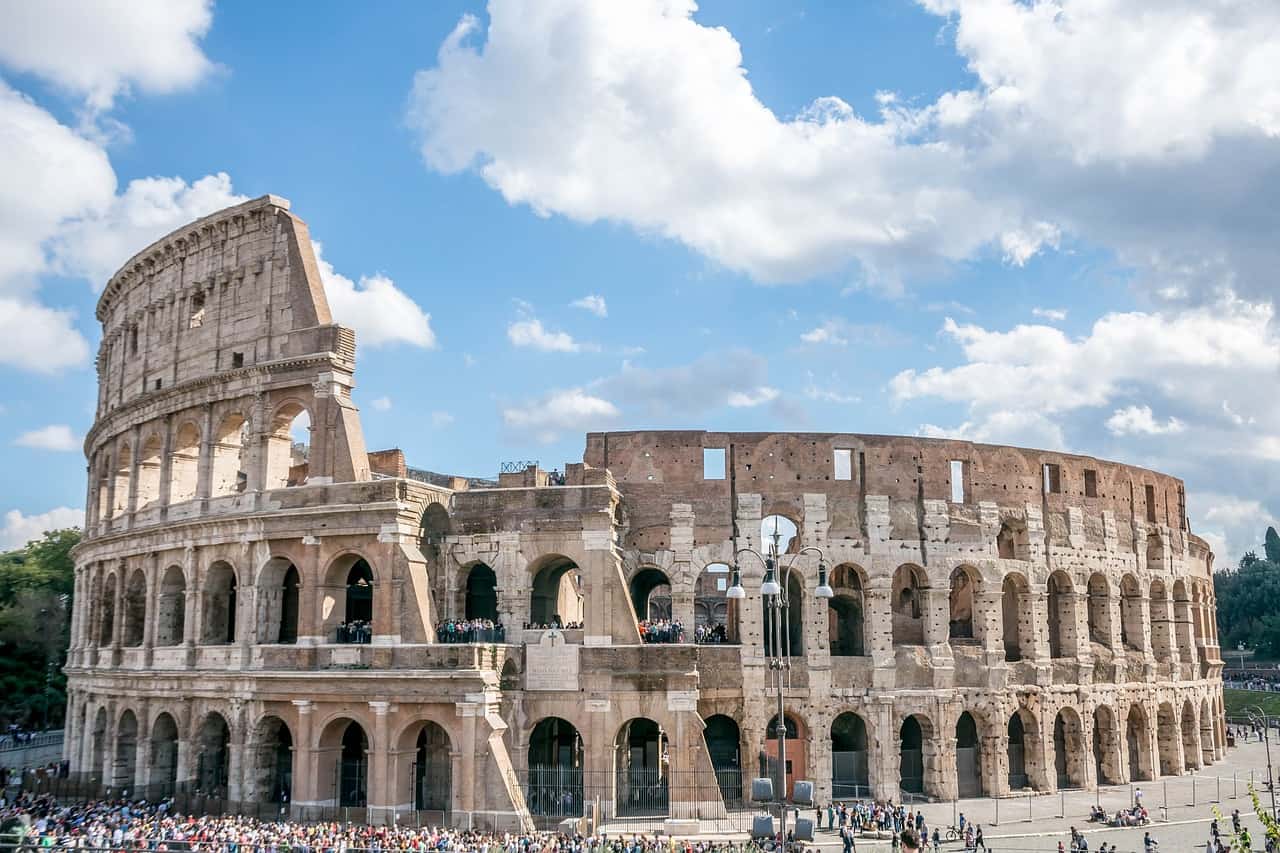
The Colosseum in Rome is the biggest amphitheater in the world.
The Colosseum is an enormous stone amphitheater situated on Piazza del Colosseo, 1,00184 Roma. It measures around 189 meters long, 156 meters wide, and 50 meters high (about the height of a 12-story building). The structure has 80 entrances and accommodates around 50,000 spectators. It took around 60,000 Jewish slaves to build the Colosseum.
Vatican City is the smallest country in the world within the city of Rome.
The Vatican City is the smallest country in the world and lies within the city of Rome. However, it is an independent state. The entire Vatican City is only one-eighth of the size of New York‘s Central Park. With around 1,000 people, Vatican also has one of the smallest populations in the world.
The Roman Empire lasted for 1,500 years.
Augustus Caesar founded the Roman Empire when he declared himself as the first emperor in 31 BC. The empire crumbled in 1453 AD with the fall of Constantinople. The Roman Empire lasted for around 1,500 years. The existence of the first two centuries was a period known as “Pax Romana” or “Roman Peace.”
Julius Caesar expanded the territories of Rome.
Gaius Julius Caesar was a politician and Roman general who played important roles that led to the end of the Roman Republic and gave rise to the Roman Empire. Caesar expanded the territories of Rome by invading Gaul. Gaul is a region inhabited by the ancient Gauls. Included in its territory is what is known as modern-day France and parts of Belgium, western Germany, and northern Italy.
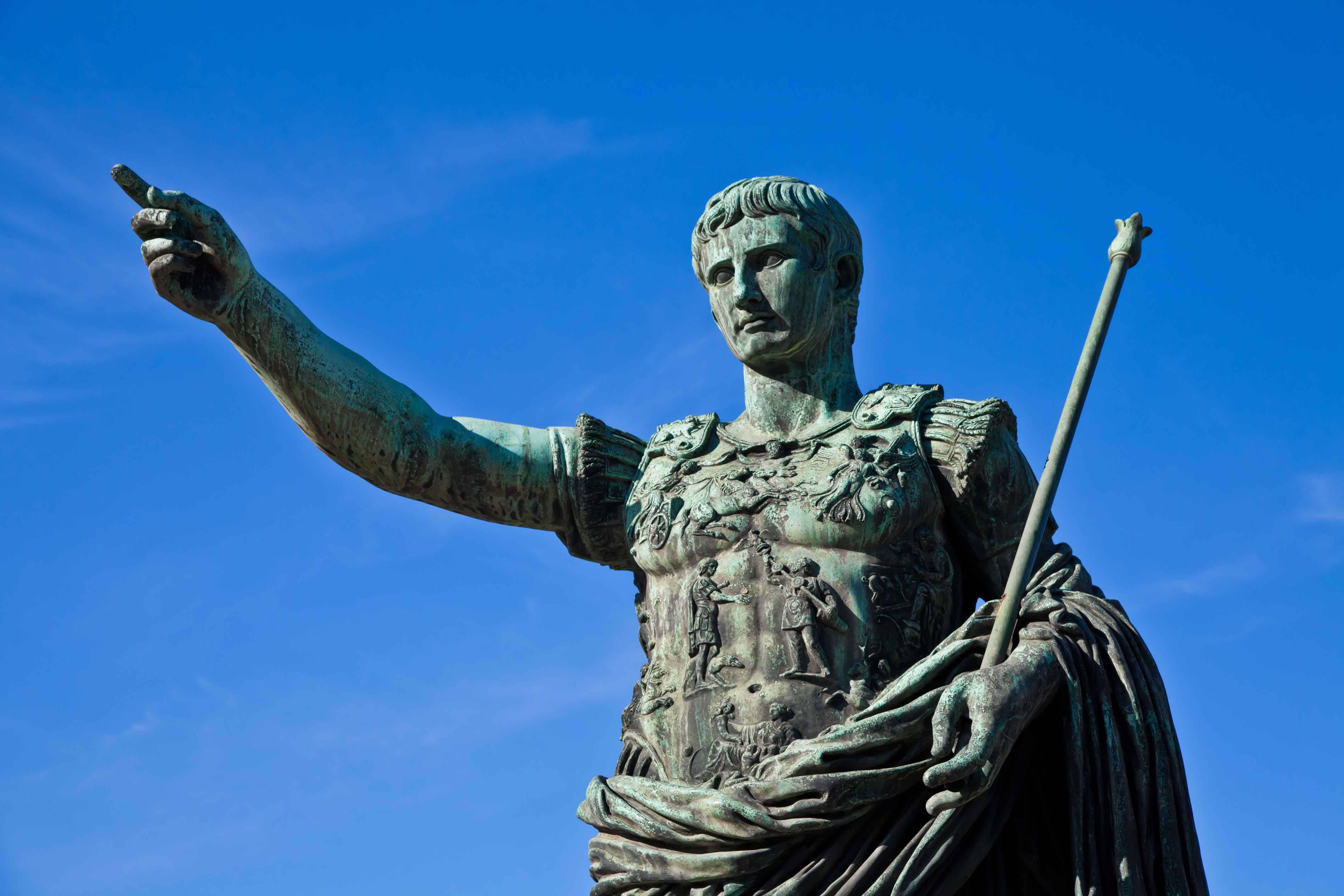
Julius Caesar made himself dictator of Rome.
By 44 BC, Julius Caesar ordered the senate to make him dictator for life. As the dictator of Rome, he used his power to enlarge the senate, made government reforms, lessened Rome’s debt, and even reformed the calendar. Customarily, dictators only serve for a limited time, and then they step down. But on March 15, 44 BC, the Roman senators ordered the assassination of Julius Caesar amid fears that he planned to claim the title of king. They believed that once that happened, Julius Caesar will become a tyrant ruler.
Trevi Fountain is one of the most famous fountains in Rome.
Trevi Fountain is one of the most beautiful and popular fountains in Rome. The Italian architect Nicola Salvi designed it with the help of a fellow Italian, a painter and architect by the name of Giuseppe Pannini, along with several others. It is one of the biggest Baroque fountains ever made, (Baroque is a style of architecture that flourished in the early 17th century). The fountain is around 26.3 meters (86 feet) high, and 49.15 meters (161.3 feet) wide.
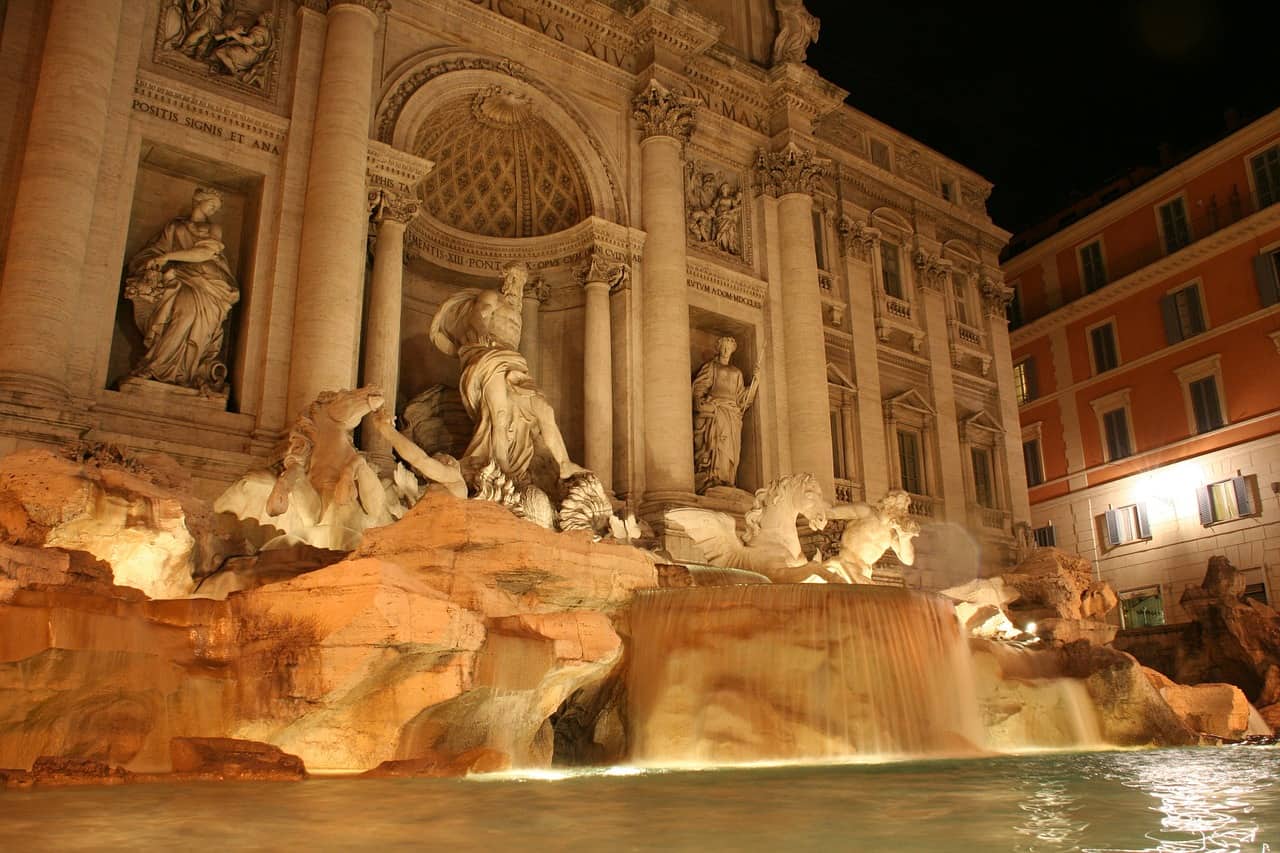
Rome's Spanish Steps has 138 steps.
The Spanish Steps is a staircase in Rome with 138 steps. Also called the “Scalina Spagna,” after its irregular butterfly shape, it’s one of those must-see sights in Rome, as well as a magnificent example of Roman Baroque Style. The steps are wide, irregular, curved, and have terraces too.
Geographically, Rome has seven hills.
Geographically, Rome features seven hills: Esquiline, Palatine, Aventine, Capitoline, Quirinal, Viminal, and Caelian Hill. They are on the east of Tiber, the third longest river in Italy. It is said that the empires originated from the Seven Hills Of Rome, and different tribes inhabit each hill.
Palatine Hill was the home of aristocrats and emperors.
One of the most ancient parts of the Seven Hills Of Rome is Palatine Hills. It has also been called “the first nucleus of the Roman Empire.” It was also home to imperial palaces, beginning with Augustus, and is also a place of houses of the rich. In Roman mythology, Palatine Hill is known as Lupercal, the place where the she-wolf found Romulus and Remus.
Circus Maximus was the first and the biggest stadium during Ancient Rome.
Circus Maximus was a venue for mass entertainment and a stadium for ancient chariot racing (one of the most popular ancient Greek and Roman sports). It lies between the valley of Palatine and Aventine Hills. It was the first and the biggest stadium in Ancient Rome. Circus Maximus can accommodate around 150,000 spectators and measures 621 meters or 2,037 feet in length, and 118 meters or 387 feet in width.
Appian Way is the first and one of the most famous Roman Ancient roads.
One of those facts is about Appian Way, an important road in Rome. The construction of the Appian Way in 312 BC was the main route for military supplies. It was also the first long highway built to transport troops to a smaller region of Rome.
Roman numerals originated in Rome.
Roman Numerals is a system of writing numbers that originated in Ancient Rome and throughout Europe. It remained the usual form of writing numbers until the Late Middle Ages (AD 1250-1500). A combination of letters from the Latin alphabet represents the numbers in Roman Numerals.
St. Peter's Basilica is one of the biggest Christian churches in the world.
St. Peter’s Basilica is one of the biggest churches in the world, with an exterior area of 21,095 square meters or 227,060 square feet and an interior area of 15,160 square meters or 163,200 square feet. It can also accommodate approximately 20,000 people and is regarded as one of the holiest Catholic shrines and “the greatest of all churches of Christendom.”
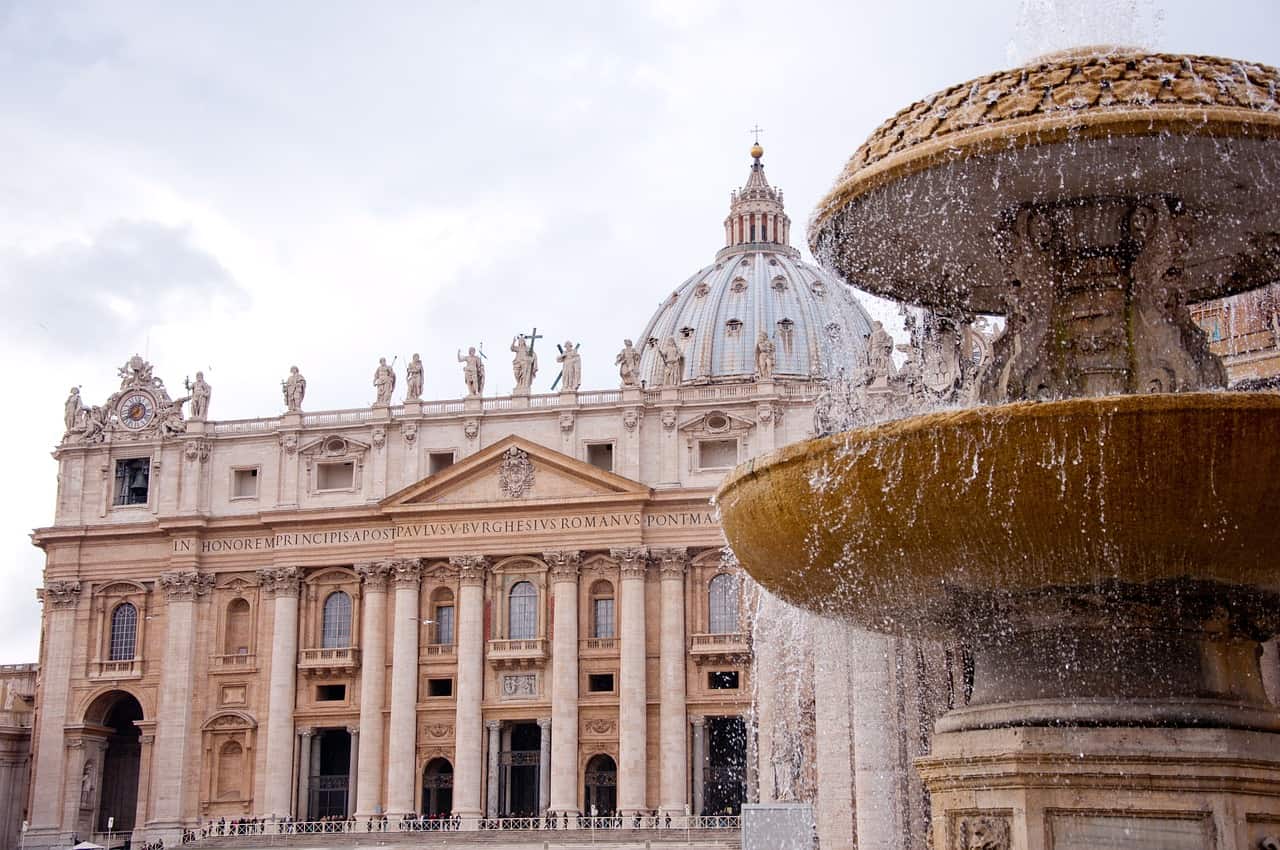
Roman Forum is a rectangular plaza at the center of Rome City.
Roman Forum, also known as Forum Romanum, is a rectangular plaza at the center of Rome City. Originally, it was a marketplace known as Forum Magnum, or simply the Forum. Several ancient government buildings surround the plaza. For centuries, the Roman Forum was the center of Rome’s day-to-day life.
SPQR means the "Senate and the Roman people".
The abbreviation SPQR means Senātus Populusque Rōmānus (Senate and the Roman people). It can be seen in banners, monuments, building throughout the city of Rome. This symbolizes the whole of the Roman state and as a reference to its two components; Rome’s senate and her people.
Trajan's Market is one of the oldest shopping malls in the world.
Trajan’s Market is a large ruin, situated on Via Dei Fori Imperiali, Rome. Apollodorus of Damascus, an architect who always followed Emperor Trajan, built the marker at around 100 to 110 AD. Nowadays, historians view Trajan’s Market as evidence of ancient architecture. It is thought to be the world’s oldest shopping mall.
Sistine Chapel is one of the must-see places in visiting Rome.
If you are traveling to Rome, Sistine Chapel is a must-see place, though technically, it is in the Vatican. It is one of the chapels in the Apostolic Palace or the official residence of the Pope. Sistine Chapel got its name from Pope Sixtus IV, who was the head of the Catholic Church from August 9, 1471, to his death.
Michelangelo painted the Sistine Chapel's ceiling.
The Italian sculptor, painter, and architect, Michelangelo di Lodovico Buonarroti Simoni or simply Michelangelo painted the ceiling of the Sistine Chapel between 1508 to 1512. The Creation of Adam and the Expulsion of Adam and Eve from the Garden are the two most important scenes Michelangelo painted on the ceiling.
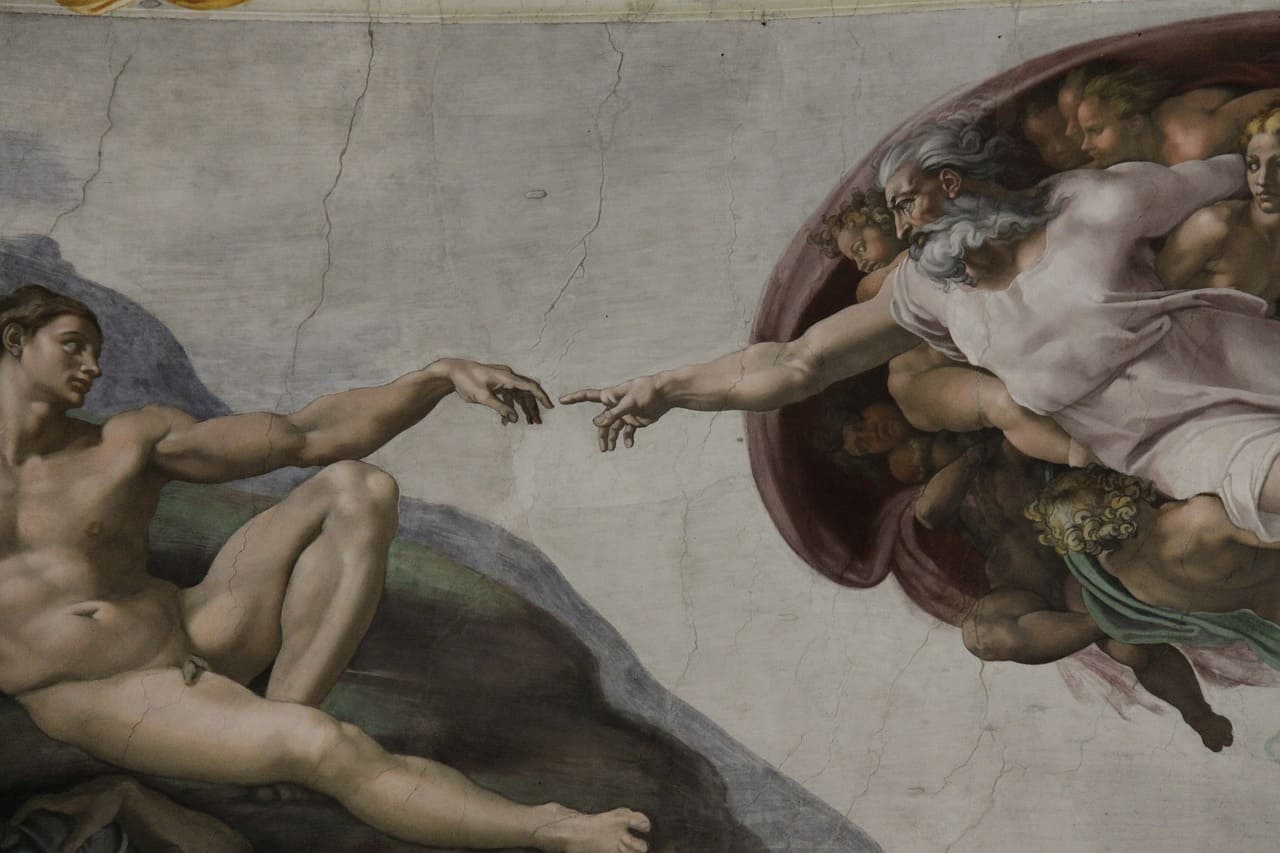
St. Catherine of Siena is one of the patron saints of Rome.
Catherine of Siena was an activist, a reformer, an author, and a Doctor of the Church. She died on April 29, 1380, in Rome, Italy. Her remains lie in the Dominican church of Santa Maria Sopra Minerva. Pope Pius II, who reigned from 1458 to 1464, proclaimed her a saint in 1461. She was also made one of the patron saints in Rome by Pius IX, (a Pope from 1846 to 1878), in 1866.
The Passetto di Borgo in the novel "Angels and Demons" really exist.
The “Pasetto di Borgo” in the 2009 best-selling mystery-thriller novel Angels and Demons is real. Passetto di Borgo or simply Passetto is a passage that connects the Vatican City with the Castel Sant’Angelo (a towering cylindrical building in Rome). It measures around 800 meters long, or 2,600 feet, and is situated in Borgo, a territorial subdivision in Rome. The passage served as an escape route for Popes in danger.
"All roads lead to Rome" is a famous proverb.
“All roads lead to Rome,” is a famous proverb that means that there are different ways to achieve a goal. This is true in Rome. There are about 29 military highways that all lead to Rome. Moreover, 372 roads cover 250,000 miles or 400,000 kilometers and 50,000 miles or 80,500 kilometers, that connect all the 113 provinces of Rome.
About 90% of Rome has not been excavated.
Several people think that most of Ancient Rome has been exposed or excavated. However, experts assume that it really just around 10%. Most of the ruins and monuments remain buried 30 feet or below the current sea level. Being continuously populated for about 2,800 years can prove that much of Ancient Rome remained underground.
Was this page helpful?
Our commitment to delivering trustworthy and engaging content is at the heart of what we do. Each fact on our site is contributed by real users like you, bringing a wealth of diverse insights and information. To ensure the highest standards of accuracy and reliability, our dedicated editors meticulously review each submission. This process guarantees that the facts we share are not only fascinating but also credible. Trust in our commitment to quality and authenticity as you explore and learn with us.
